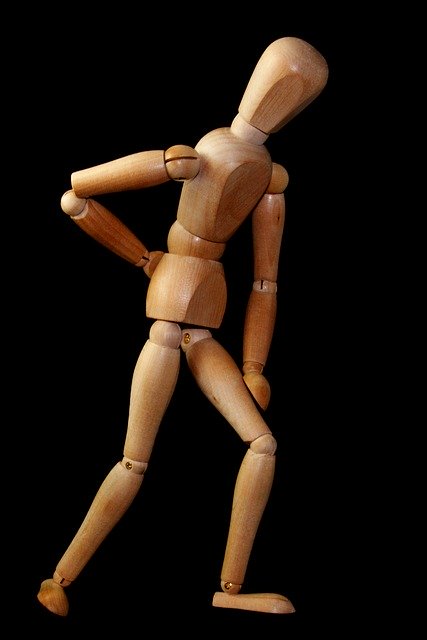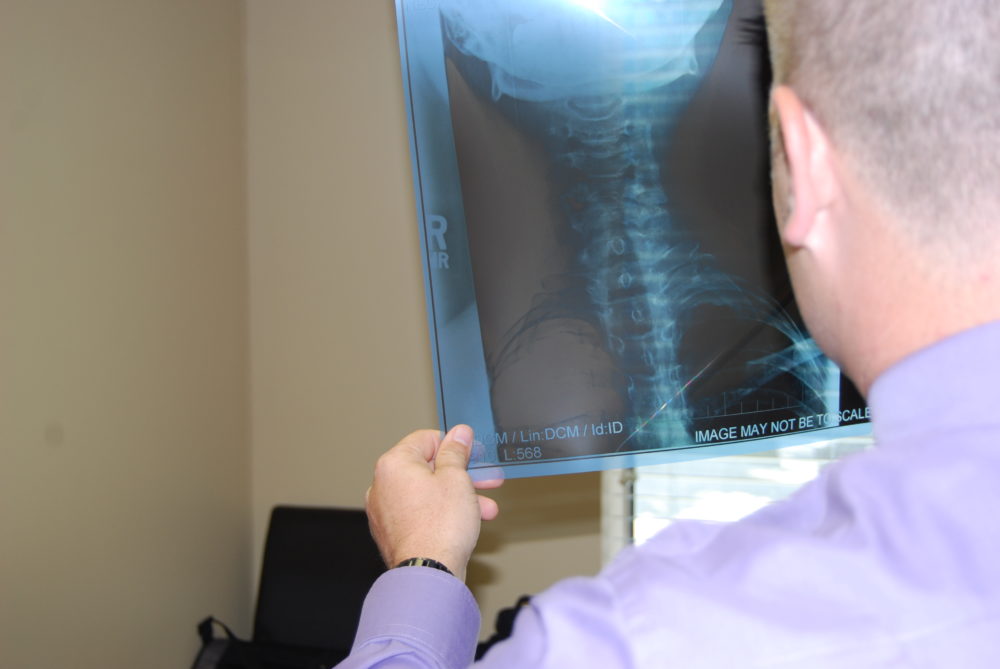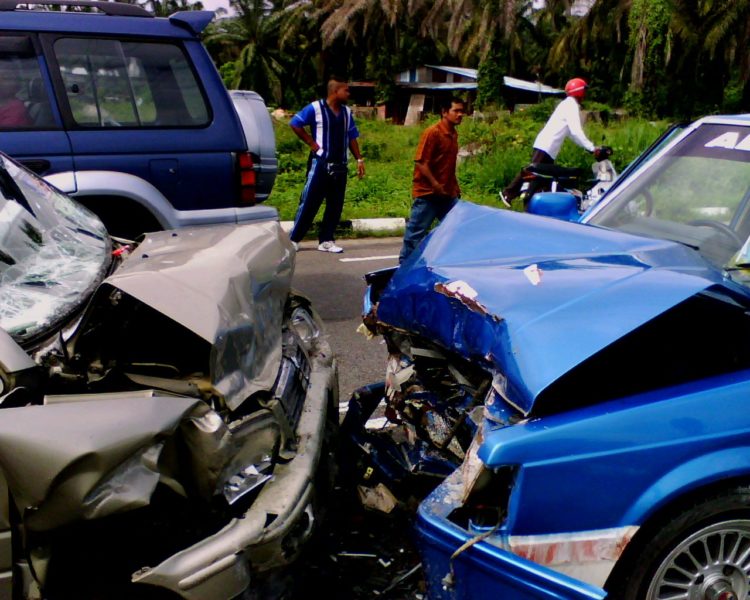Car accidents, and the devastating impact forces that can accompany these auto accidents, can seriously affect the structures of the neck and back. Not only are the neck and low back areas of the body crucial for a variety of daily activities, but they are also sensitive to sudden movements and forces. When a car crashes into another car, the inertia from nearly 4,000 lbs of steel transmits a substantial amount of force into these sensitive areas of the body. These forces can create soft tissue injuries like whiplash, strains, sprains and sprains. Disc injuries such as bulges and herniation can be created and aggravated, and bony injuries, like a fracture can also result from these accidents.
The sudden jerk of the front and back movement of the head is often referred to as whiplash. Whiplash injuries are common following an auto accident, and can contribute to a number of different injuries to the spine. Simply put, the human spine is not set up to handle the forces that auto accidents can generate upon impact. The resulting injuries from these forces in the neck and back can be both debilitating and extremely painful. After an auto accident, an x-ray and/or MRI may be needed to identify disc injuries or facet joint injuries. The remainder of this post will focus on the various disc injuries and facet join injuries that are commonly seen after a car wreck, and why it is important to know the difference, so that appropriate treatment can be received.
Car Accident Back Pain
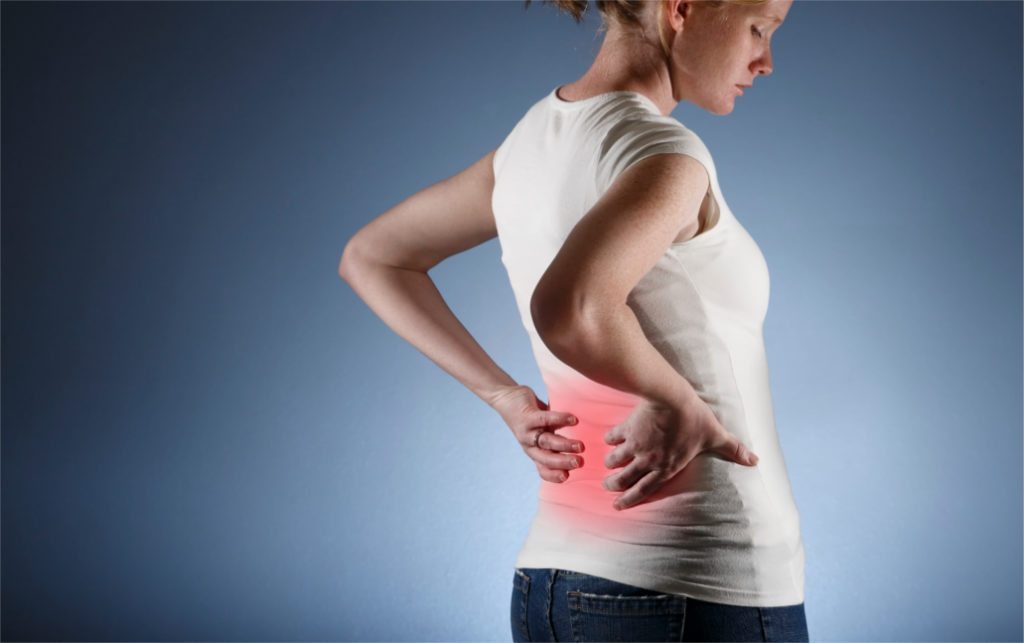
Discogenic pain refers to pain that is associated with the spinal discs. The discs found in the spine are round pieces of cartilage that have three main functions. The first is to nourish the spine. The second is to provide stability and cushioning between the bones of the spine, and the third is to assist with spinal movement. When these spinal discs are injured or damaged after a car wreck (or as a result of degeneration, arthritis, or other trauma) it can result in dysfunction in one of the three areas above, along with pain!
As the name implies, discogenic pain results from damage to the spinal disc. Most people experience discogenic pain in lower back (lumbar spine), though the neck (cervical spine) and mid back (thoracic spine) can also manifest discogenic pain.
Diagnosing Low Back Pain after a Car Accident
The lumbar spine contains five vertebrae (though some individuals have a 6th!) with the soft discs in between. The discs contain a soft nucleus, or inside, and a tough outer ring. Many times these discs are described like a “jelly filled doughnut.” Following injury, age, degeneration, or loss of nutrition to the area, and of course, an auto accident, the spine can manifest injury in a variety of ways. In order to identify fractures in the spine, advanced signs of arthritis, spinal degeneration, and other bony injuries x-ray is normally the first diagnostic test performed. X-rays are a low cost, quick, and efficient way to identify hard tissue pathology, but on the other hand, x-rays are ineffective for diagnosing soft tissue related problems. The majority of soft tissue injuries are best identified via MRI. In emergency situations, CT scans can be used for both hard and soft tissue injuries. With a comprehensive physical exam that includes orthopedic, neurological, and palpation assessments, the clinician is able to make the best recommendation for which diagnostic approach would be best suited for the patient’s presenting symptoms.
Common Discogenic Low Back Pain Conditions
- Lumbar Strain and Sprain – Strains and sprains in the low back frequently result from bending, and twisting movements such as lifting a heavy object, sports injuries, and auto accidents. A strain involves the tendon of a muscle, and a sprain involves the ligaments that protect the joint. Depending on the severity of the strain/sprain injury will depend on the approach to treatment. Many times, the strain/sprain injury is not able to be identified on imaging (MRI), and is diagnosed by the doctor after a thorough history, and physical exam.
- Lumbar Spinal Stenosis – Stenosis is a medial term that means abnormal narrowing of an opening. In the lumbar spine, spinal stenosis is identified through imaging studies like xray, CT scans, and MRI. Central canal stenosis is diagnosed when the area where the spinal cord resides begins to narrow, possibly encroaching on the spinal cord. Neuroforaminal stenosis is when the joint space between two spinal vertebrae begin to narrow, possibly pinching a spinal nerve. Both of these types of stenosis commonly create low back pain. Even though these are usually signs of degeneration or arthritis in the low back, an auto accident that creates inflammation to the area will make the stenosis symptoms worse. Occasionally, the trauma from the car accident can cause a disc to rupture or a bone fragment to invade the space where the spinal cord or spinal nerves are, resulting in pain, weakness, numbness, and other symptoms.
- Lumbar Disc Herniation – Another sign of spinal arthritis, or degeneration is a weakening of the disc. Other names for disc herniations include bulges, “slipped discs,” and “thowing your back out.” Sever disc herniations can result in fragments of the disc becoming dislodged from the main section of cartilage and float freely around in the area of the spinal cord, creating significant amounts of pain in the low back. Disc herniations can affect the spinal canal in different ways, and some encroach on the spinal nerves as they leave through the neuroforaminal opening. Disc herniations are identified through MRI testing, though they can be suspected after an xray when disc narrowing is present between two spinal vertebrae.
- Degenerative Conditions in the Lumbar Spine – Degenerative conditions in the lumbar spine result through the natural aging process, autoimmune conditions, and repetitive injuries to the lumbar spine (both large and small). Degenerative spinal conditions are easily aggravated through traumatic injuries such as an auto accident or a slip and fall. Common degenerative conditions include osteoarthritis of the spine, degenerative disc disease, bulging discs, herniated discs, spondylolisthesis, scoliosis, bone spurs, sciatica, and autoimmune arthritis.
Discogenic pain can affect individuals at rest, when moving, bending, or sleeping, and even during regular daily activities such as walking the dog or carrying the groceries. The pain is typically described as shooting and sharp, and can come and go depending on how injured the area is. Additionally, discogenic pain can also be localized to a specific area, or may include radiating pain, numbness, tingling, or burning sensations that go down one or both legs, the buttocks, the groin, and even down as far as the feet and ankles. The radiating symptoms are frequently referred to as sciatica. Even though discogenic pain can affect individuals differently, the pain is normally aggravated with bending, twisting, and lifting activities, though each person may have their own movement or activity that triggers their pain.
Treating Discogenic Pain after an Auto Accident
Most discogenic pain patterns are addressed with conservative treatment options first, before going into more aggressive treatments. Conservative, non-surgical approaches to discogenic pain include chiropractic manipulation, physical therapy stretching and strengthening exercises, acupuncture and dry needling, anti-inflammatory medications, and rest. These are the first approaches to treating pain immediately following an accident or injury. If these treatment options do not result in significant relief in an appropriate time period, other non-surgical options can also be utilized in order to bring relief to the injured. One example of a more aggressive, yet non-surgical option, is an epidural corticosteroid injection, which involves an injection directly into the area that is inflamed and not responding to treatment.
Facet Joint Injuries after a Car Accident
The facet joints are also located throughout the spinal column. These joints play an important role in protecting the nerves that leave from the spinal cord and travel to the various tissues throughout the body. These joints are surrounded by a thick, flexible membrane that protects and lubricates the joint, allowing for optimal movement. Additionally, these joints help support the weight of the body, and facilitate individual spinal joint movement. The facet joints, along with the spinal discs, are essential for optimal spine function, and a return to a pain free life after an auto accident.
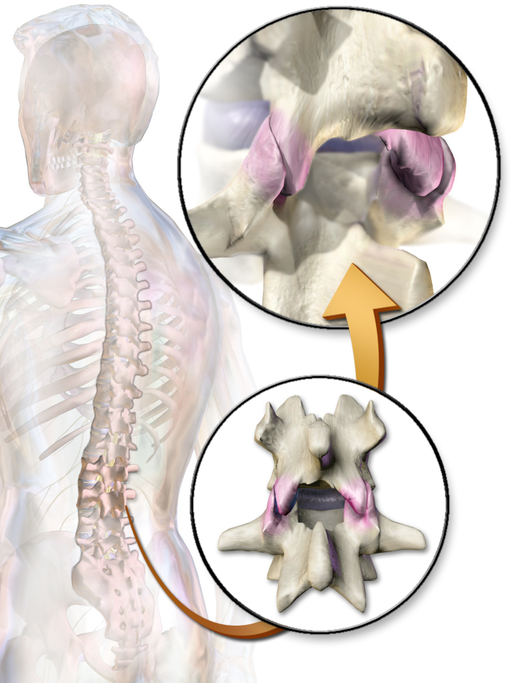
The facet joint’s role is to prevent the spine from moving too much in one of the six primary spinal movements [flexion/extension (bending), rotation (twisting), and lateral flexion (leaning)]. The facet joints are what stop someone from bending in half. The movement is protected via connective tissues such as ligaments, and a large network of nerve endings in each spinal facet joint. After an auto accident, these connective tissues, and/or nerve bundles can become injured, leading to increased pain.
Symptoms Associated with Facet Joint Injuries
One of the most common symptoms associated with facet joint imbalance after a car wreck are muscle spasms. These spasms result as a compensation to the injured joint in order to better stabilize the area. Without the ligaments and nerves there to protect the movement, the injured area is perceived to be unstable, so the muscles contract excessively in order to reduce motion in the unstable area. For example, it is not uncommon for a patient to experience a muscle spasm while simply bending over to put on their shoes, or role over in bed. When the facet joint “seize” or “lock up” these muscles can spasm abruptly and without notice.
Facet joint injuries can create a variety of symptoms that are often confused with spinal disc issues. Appropriate imaging can help differentiate the different sources of the symptoms and distinguish between the two.
Proper Diagnosis and Treatment for Facet Joint Injuries
Most emergency rooms and physicians offices perform standard x-rays on patients that are involved in auto accidents. This is a great start as it helps to rule out fractures to the numerous bony structures in the spine, ribs, and extremities. On occasion, the imaging department may request advanced x-ray series called CT or CAT Scans. These advanced tests can identify information about the bones and joints that standard x-ray is unable to identify due to how sensitive the CT tests are.
In certain situations, bio-mechanical x-rays will also be performed in order to identify the connective tissue injuries associated with the facet joint injury. Bio-mechanical x-rays are used to demonstrate the instability of the joint when put into motion. An example would be moving the neck into full flexion (chin to chest) and then taking the x-ray with the patient in that position. Tears in the joint capsules, and other stabilizing structures can be identified in this way.
Treatment of most facet joint injuries that do not involve complete tearing of the connective tissue is approached with conservative options. These options include over the counter anti-inflammatory and pain medications (NSAID’s) such as ibuprofen, ice or heat compresses, passive and active rehabilitation activities, chiropractic care, acupuncture, electrical stimulation, and at home exercises. In rare situations, a surgical approach may be warranted in joints that involve tears that are unlikely to recover with conservative treatments.
What is the Cause of My Back and Neck Pain After a Car Accident?
Auto accidents can be the cause of a tremendous amount of force being distributed throughout the body. These forces can fracture bones, create bruising, swelling, and pain. During a car crash, the speed of the rapid acceleration/deceleration of the unsuspecting head and body frequently result in tears, strains, and sprains of the various soft tissues. Even once pain begins to subside, these injured tissues can be the source of recurring “flare ups” for years to come, and have been shown to stimulate early degeneration in the affected area.
Our goal is to identify and treat the source of the pain so that it can be effectively managed, and the “flare ups” can be reduced, and minimized. We want to be your resource for auto accident recovery.

